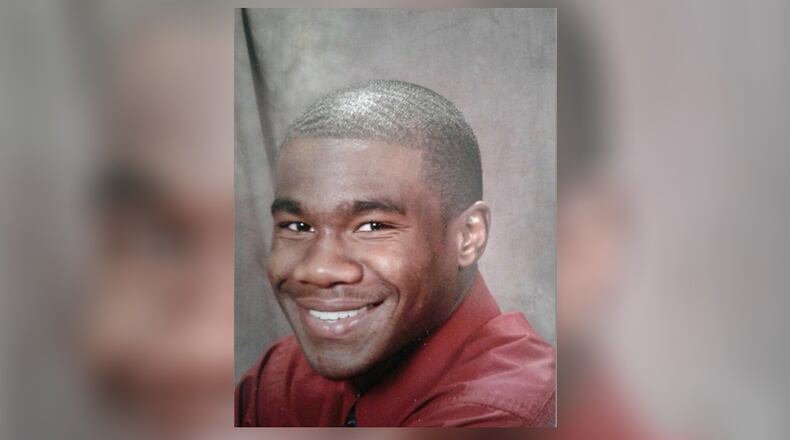A United States marshal facing murder and other charges in the 2016 shooting of Jamarion Robinson took the stand Wednesday at his immunity hearing.
Assistant Chief Inspector Eric Heinze told a federal judge that he and his colleagues followed their training and the law when they opened fire on Robinson seven years ago at his girlfriend’s East Point apartment, striking him nearly five dozen times.
Heinze and Clayton County police Officer Kristopher Hutchens, a member of the U.S. Marshals Service fugitive task force, were indicted on murder and other charges in Fulton County in 2021. That case was moved to federal court last year after a judge ruled they were performing their federal duties at the time of the shooting.
Robinson, 26, was shot by three officers after authorities said he pointed a gun at police when they entered the two-story apartment. Prosecutors contend the officers used excessive force and never had a search warrant to enter the home in the first place.
Heinze said Robinson pointed a gun at them from the second-floor of the apartment, prompting them to fire nearly 100 rounds. Evidence collected from the scene showed Robinson fired at least two shots before he was killed, according to testimony presented in court.
“I was in fear of my life and lives of my co-workers,” said Heinze, who was armed with a ballistic shield and a semi-automatic pistol at the time.
Credit: Fulton County Sheriff's Office
Credit: Fulton County Sheriff's Office
Authorities began searching for Robinson after he poured gasoline outside his mother’s bedroom door on July 11, 2016, and weeks later aimed a gun at two Atlanta police officers responding to a call about a suspicious person squatting at an apartment complex, records show. He managed to escape both times, prompting the weekslong search that ended in his death.
Daniel Doyle, a third task force member who opened fire that day, died of cancer in March 2020 and was never charged.
On the stand, Heinze told his defense attorney Lance LoRusso that Robinson was a flight risk with a propensity for violence, particularly against law enforcement.
“Two violent incidents in a relatively short span,” Heinze said under oath. “In my opinion, he was escalating in violence.”
Because he had been staying with his girlfriend and the task officers knew he was inside, there was no need to request a search warrant, said Heinze, who maintained the officers were simply following their training.
Nobody came to the door when task force officers knocked and announced their presence, Heinze said, prompting them to force open the door with a battering ram. Heinze, who was the first to enter the apartment, said he could see Robinson slowly walking down the stairs with a semi-automatic pistol in his hand.
“It wasn’t the typical way that you walk down stairs,” he said. “I could tell his hands were out in front of him and he was holding something. It was pointed directly at myself and other law enforcement officers.”
He also said those who shot Robinson did no more than what was “reasonably necessary” to protect themselves in a dangerous situation.
Bullets ripped through walls, bedrooms and a closet door as the task force officers unloaded their weapons, which included a Glock pistol and two submachine guns, according to testimony. Robinson’s blood spattered on the wall and carpet of the upstairs landing, and photos showed a trail of blood leading down the stairs and into the living room where a Clayton County medic tried in vain to treat him.
Cellphone video filmed by a neighbor inside his apartment also captured a portion of the shooting, which included both automatic and semi-automatic gunfire. In that video, what sounds like three automatic rounds could be heard after a flashbang device was deployed inside the home.
But the officers involved told the GBI that Robinson was unresponsive to the flash bang, meaning he was probably unconscious or dead. They also said they didn’t remember anyone firing after the flashbang was deployed, something prosecutor Emilia Beskind asked about during her cross-examination.
Robinson’s body was so riddled with bullets that he lost three inches off his height, she told the judge.
“He started out at 5-foot-6 and ended up at 5-3,” Beskind said.
Heinze told her that none of the officers ever fired their weapons from above the bottom stair. He also acknowledged that while the neighbor’s cellphone video appears to capture the sound of automatic gunfire after the flash bang, he never saw who fired the shots.
“I didn’t hear it, I didn’t feel it and I didn’t see it,” Heinze said. “At no time did any law enforcement officers fire unless Mr. Robinson was pointing his gun and was a threat.”
About the Author
The Latest
Featured



